U.S. Navy Vietnam War Chicago, IL Flight date: 09/20/23
By Al Rodriguez, Honor Flight Chicago Veteran Interview Volunteer
Ignacio ‘Nacho’ says he’s a Navy man that never set foot on a ship. Still, he’s proud of his naval service as a crew chief on a C-121 Constellation known as the Typhoon Tracker that traveled throughout the Pacific. He is an advocate of veteran causes and is especially proud of his part in getting a Welcome Home parade for Vietnam Veterans in Chicago.
Nacho was born in Michoacán, Mexico. His father had previously found work at US Steel South Works and had moved to Chicago and in 1952 sent for the family. Since Nacho didn’t speak English, he was placed in a remedial class with other kids that were learning challenged and put in the 1st grade. He said he knew the basic course curriculum but had no way of conveying that to the teacher. As he learned English he was advanced ahead. Nacho graduated from Chicago Vocational High School in June of 1964. Having already turned 18 years old before graduation he had his draft notice. Sadly about the same time his dad was killed coming home from work. He felt that his world had collapsed but he still reported to the induction center knowing that his mom and six siblings would need financial help. While waiting for his induction he was approached by a Navy recruiter and he signed up for Nuclear Power School with Aviation School as his second choice.
In October Nacho was sent to Great Lakes Naval Training Center for basic training. He excelled and was assigned as the Recruit Petty Officer of his company. After graduation, he was assigned to Aviation School because he was not an American citizen, so he could not attend nuclear power school. In January of 1965 he arrived at Millington Naval Air Station in Memphis, Tennessee, for aviation machinist school. He was then sent for advanced training to Naval Air Station Corpus Christi. He said he learned everything there is to know about the mechanical repair of every type of aircraft. The 2nd part of the advanced training dealt with pre-flight inspections of the aircraft, making sure they were mechanically sound for flight, fueled to proper levels, cargo doors locked and guiding the aircraft for takeoffs and landings.
In 1966 he applied for and received his American Citizenship.
Nacho finished his advanced training and was assigned to VW-1 Squadron based in Guam. He was placed on a crew on a C-121 Constellation plane, AEWRON, Airborne Early Warning One. This airplane was equipped with radar and electronic countermeasure and surveillance equipment. He said that the plane would fly into a typhoon to reach the eye for instrumentation readings and pictures, what he called a ‘fix’, on the wall cloud, wind speeds, barometric pressure and the direction of the storm. Flying into a typhoon isn’t for the squeamish with the turbulence and wind shears, in August of 1968 alone there were eight typhoons. Because he was going for duty in Vietnam he received various training in case the aircraft was shot down. From Guam he was sent to Coronado Training School in California for Survival Evasion Resistant Training. He received his Air Crew Wings with this training. He was sent to the Philippines for Jungle Evasion Training and then to Okinawa for a 24-hour Water Survival Training. After completion of this training he was sent back to his crew on Guam and he was promoted to Crew Chief.
Nacho and his crew flew weather missions throughout the Pacific. They would intermittently rotate into Vietnam for surveillance duty, spending two to three weeks flying out of Da Naang or Chu Lai. This surveillance, which was mostly over the Gulf of Tonkin, was to make sure that land-based and carrier aircraft did not stray into restricted areas and warning them of enemy missile, SAM attacks. On one of these flights they had an unidentified aircraft coming at them. They took evasive action by quickly descending from 25,000 feet to sea level. He explained that the C121 was not equipped with defensive weapons and that in case of a crash each crew member had an electronic piece of equipment to destroy. There was no quick way for them to get out of the plane.
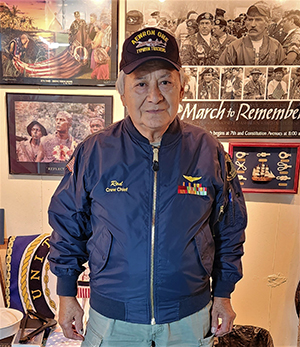
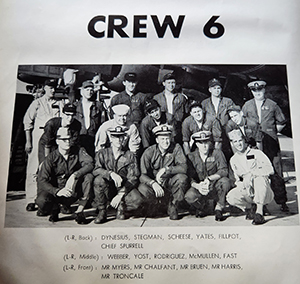
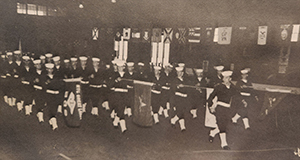
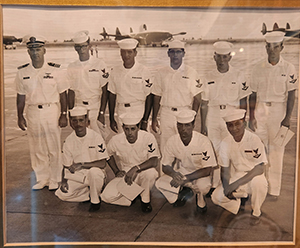
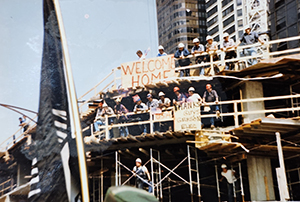
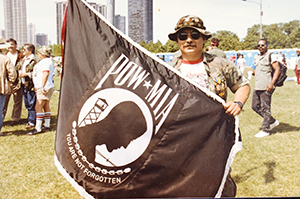
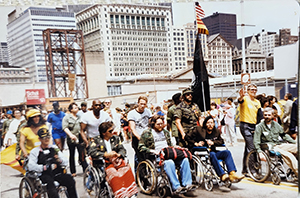
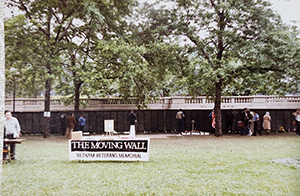
At the end of 1968 Nacho thought of reenlisting but opted to go home instead. In 72 hours he flew from Vietnam to Guam to Treasure Island Naval Station in San Francisco for separation. He said that the bus from the airport to the naval station looked like a prison bus with chicken wire on the windows to keep them safe from the protestors. He flew home to Chicago in his jungle greens, took the shuttle and then the metro. When he got on the bus for the last leg of his trip home, the bus driver dropped him off right in front.
Nacho had a few health issues when he got home from active duty. His time in Vietnam exposed him to Agent Orange. His ankles got blisters and itched all the time. He also got blisters under his arms. He spent many days going to Lakeside Hospital as they tried to find a solution. The V.A. gave him a salve that helped a little but never cured it. In 1970 he was released with an Agent Orange card but the V.A. still denied that this was the culprit to his problem.
Delta Airlines hired him as an aircraft pre flight check inspector. His job was to verify that the plane was physically ok, baggage door was closed and locked and to take fuel samples. He did this for 4 years but he said he got tired of being out on the O’Hare Airport flight lines especially in the winter. He got a job with the City of Chicago as a heavy equipment mechanic on snow plows, fire trucks, etc. but also repaired police cruisers. He also worked on the road service truck. He met many Vietnam vets on this job.
He joined the Windy City Veterans organization and the Vietnam Veterans of America Chapter 153. The Windy City Veteran Chairman, Tom Stack saw the New York City Welcome Home for Vietnam vet parade and thought why couldn’t Chicago host a bigger one for not just our Vietnam vets but invite them from other states? They formed a committee to do just that with Nacho as a member. They contacted then Mayor Washington and he initially denied it. After further consultation, he agreed and it was scheduled for June 13, 1986. The parade would start at Navy Pier, travel around the streets in the Loop and end in Grant Park. There would be a grandstand along the route.
Nacho’s job was to contact by mailings not only Illinois veteran organizations but also other vet organizations throughout the country. He received yes responses from coast to coast. He then had to organize the placement for the color guard and each group in the parade with other committee members.
On the day of the parade the groups of veterans started gathering at 7:00AM. There were thousands of veterans that participated in the parade. Even an Australian Vietnam vet group participated. A military color guard started the march, with the grandmaster following. The grandmaster was wounded in action and had both legs amputated. He used his hands to navigate the route, refusing to use a wheelchair. Throughout the parade route people were on the sidewalks and in office buildings showing American flags, Welcome Home banners and pictures of veterans killed in action. It took the march 3 hours to get from Navy Pier to Grant Park. At Grant Park the groups visited and barbecued. They also visited the replica of the Vietnam Wall in D.C. assembled there. As Nacho retold this story, he said he can still feel the emotion of that day walking with the veterans and the crowd cheering them on along the way.
In 1988 he helped to establish a Korean War memorial at Kennedy Park in Chicago. The Windy City Veterans collected donations and worked at the site to make this happen. This is the first Korean memorial in Chicago and at that time maybe in the country. Korean Vets participated in the dedication. Growing up on the South side Nacho went to church at Our Lady of Guadalupe. In memory of his friends and neighbors, 12 men who died in the Vietnam War, he participated in the rededication of their memorial at the church.
Nacho met his future wife Joyce at the beach. Her car alarm kept going off and he fixed it for her. They married June 25, 1988. They both go to many veteran events. A Vietnam Veteran reunion at Kokomo Indiana was started by the Howard County Vietnam Veterans in 1982. Nacho has gone every year and now with his wife goes every September. Nacho also carves and customizes canes and walking sticks from fallen tree branches. He’s made several for veterans. Joyce knits customized blankets that she donates to veteran organizations.
For many years the V.A. denied that his health issues were caused by Agent Orange. The V.A. is now handling all of his service-related issues.
Nacho has been to D.C. but would like to return to the Vietnam Wall to pay his respects to his friends.
Thank you Nacho and enjoy your day!


